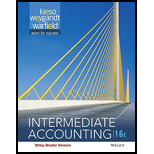
Concept explainers
Capital lease method: A process of using the asset for a rental payable in installments along with interest and gets the ownership of the title at the end of the lease contract is termed capital lease. In this, the owner of the asset or the lessor need not bear expenses like
Direct finance leasing: An agreement created between the non manufacturer and a lessee who use the asset merely for the interest receivable is termed the direct finance lease. In this arrangement the lessor provides finance to the lessee and leases the asset to the lessee. The income receivable by the lessor is the interest payable for the leased asset value.
Residual value: The amount which is remaining after computing the depreciation throughout the life of the asset is termed residual value. In the contract of lease, the lessor may guarantee a value of salvage which is included in the minimum lease payment. This guaranteed salvage value is nothing but the guaranteed residual value of the asset.
To determine the treatment of guaranteed and unguaranteed residual value in different types of lease.
Want to see the full answer?
Check out a sample textbook solution
Chapter 21 Solutions
Intermediate Accounting, Binder Ready Version
- Garnet Electronics produces a product that has a variable cost of $4.00 per unit. The company's fixed costs are $40,000. The product is sold for $8.00 per unit, and the company desires to earn a target profit of $16,000. What is the amount of sales that will be necessary to earn the desired profit? A. $80,000 B. $60,000 C. $96,000 D. $112,000 MCQarrow_forwardFinancial Accounting Questionarrow_forwardCompute the variable overhead efficiency variancearrow_forward
- Assume that markup is based on cost. Find the dollarmarkup and percent markup on cost for the following. 1. Cost: $24.65 2. Selling Price: $28.70.arrow_forwardPlease provide the answer to this general accounting question using the right approach.arrow_forwardA business purchases depreciable equipment for 191 and sells it a few years later for 166. At the time of the sale, accumulated depreciation totals 106. If the company's tax rate is 39, what is the total after-tax cash flow that will result from selling this asset?arrow_forward

 AccountingAccountingISBN:9781337272094Author:WARREN, Carl S., Reeve, James M., Duchac, Jonathan E.Publisher:Cengage Learning,
AccountingAccountingISBN:9781337272094Author:WARREN, Carl S., Reeve, James M., Duchac, Jonathan E.Publisher:Cengage Learning, Accounting Information SystemsAccountingISBN:9781337619202Author:Hall, James A.Publisher:Cengage Learning,
Accounting Information SystemsAccountingISBN:9781337619202Author:Hall, James A.Publisher:Cengage Learning, Horngren's Cost Accounting: A Managerial Emphasis...AccountingISBN:9780134475585Author:Srikant M. Datar, Madhav V. RajanPublisher:PEARSON
Horngren's Cost Accounting: A Managerial Emphasis...AccountingISBN:9780134475585Author:Srikant M. Datar, Madhav V. RajanPublisher:PEARSON Intermediate AccountingAccountingISBN:9781259722660Author:J. David Spiceland, Mark W. Nelson, Wayne M ThomasPublisher:McGraw-Hill Education
Intermediate AccountingAccountingISBN:9781259722660Author:J. David Spiceland, Mark W. Nelson, Wayne M ThomasPublisher:McGraw-Hill Education Financial and Managerial AccountingAccountingISBN:9781259726705Author:John J Wild, Ken W. Shaw, Barbara Chiappetta Fundamental Accounting PrinciplesPublisher:McGraw-Hill Education
Financial and Managerial AccountingAccountingISBN:9781259726705Author:John J Wild, Ken W. Shaw, Barbara Chiappetta Fundamental Accounting PrinciplesPublisher:McGraw-Hill Education





